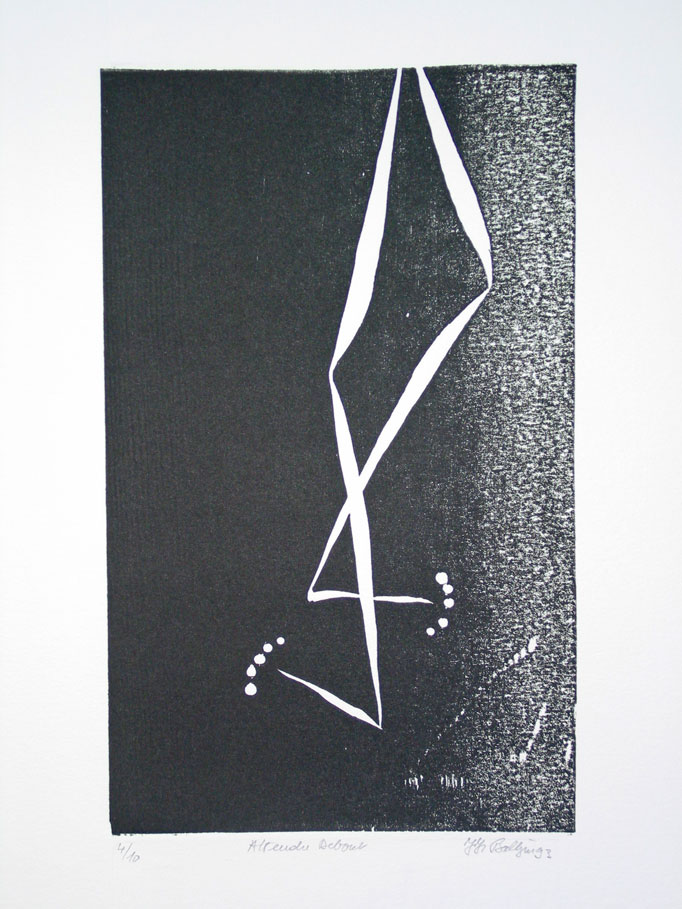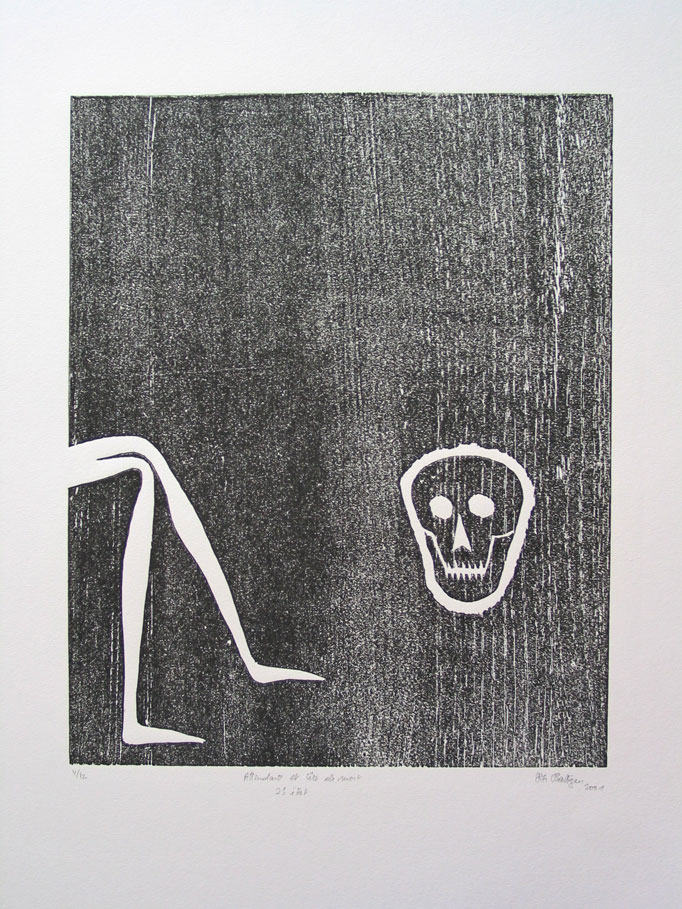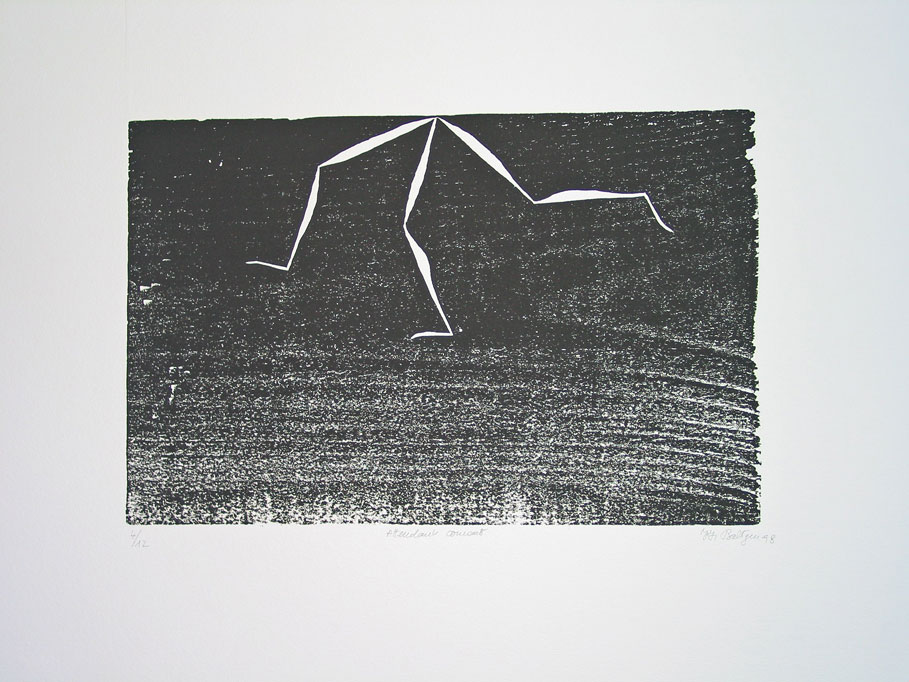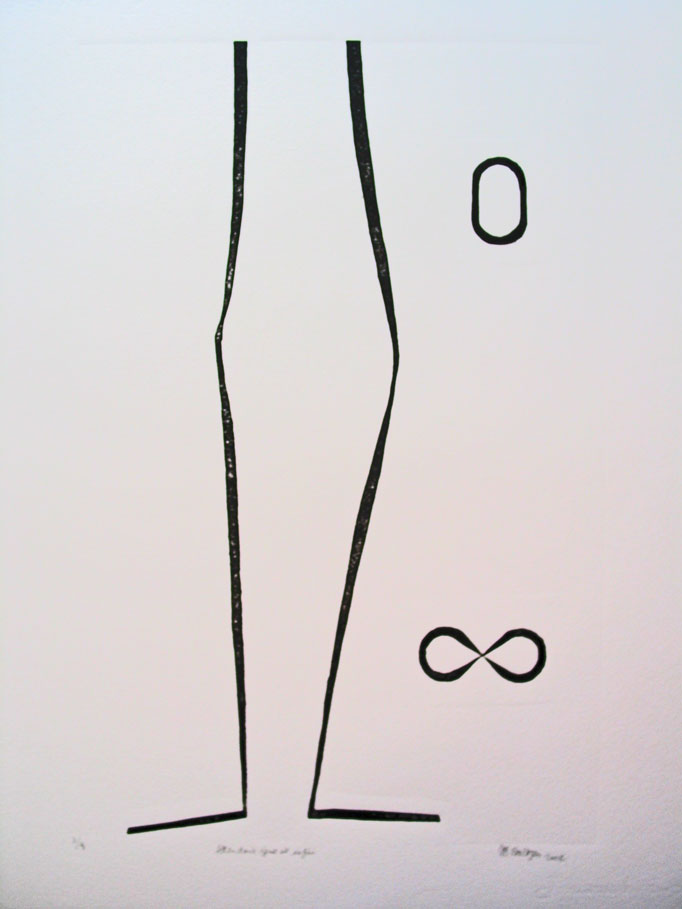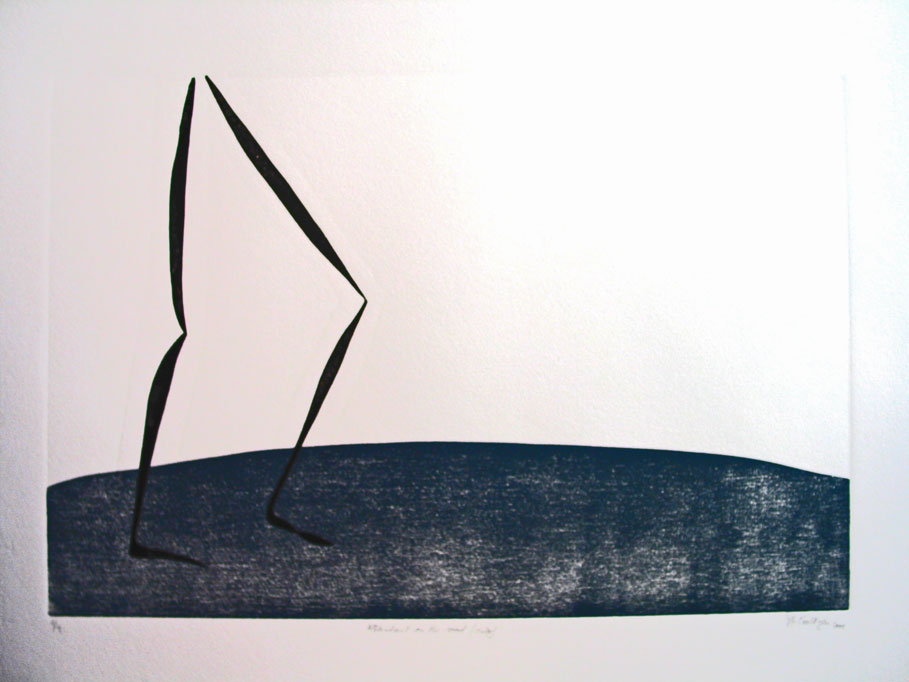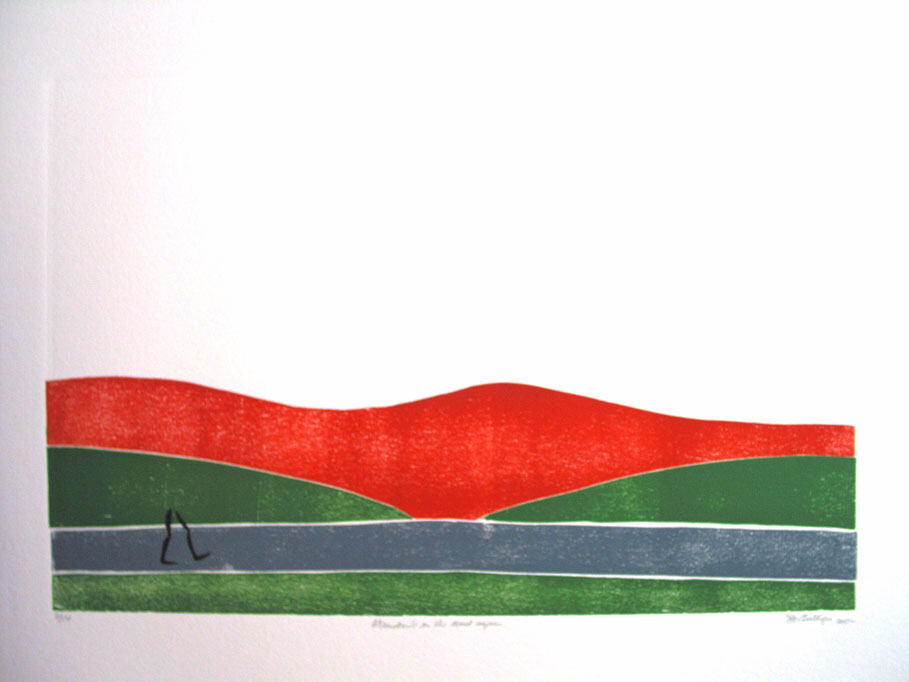Portfolio
The Awaitings
Waiting, and those who wait, is a theme that appears in my first series of prints. The woodcut “En attendant” done in 1987 was inspired by the famous painting by Van Gogh, of his room in Arles. This painting depicts the warmth of a room where one would wish to be. Some experts believe it shows the anticipation of Gauguin’s arrival. At the time Van Gogh painted this canvas, Gauguin was coming to visit, and one can imagine the intent of this painting. Vincent, returning home from a day painting outdoors expects to find Gauguin seated in the armchair waiting for him. It is more likely that, after stowing his bags, Gauguin might have taken a walk through Arles as I love to do it myself. My print is from the viewpoint of waiting, inside the room towards the half open door, waiting for an arrival.
So, this is the beginning of the theme of waiting, which is the origin of many of my prints. But to advance this theme, an external event was necessary. This occurred on a visit to the studio of Joel Kermarrec, at that time located close to the metro station Louis Leblanc in Paris. Joel was lecturing there with passion and I found myself impatient and eager to leave. It was impossible to get out, as he was standing in front of the door. He noticed my impatience, betrayed by the movement of my legs. I then realised that we betray our hidden thoughts by the movements of our legs, which we do not control. Were we to be under the table at an official dinner or even at a family meal, we might see things at odds with what is happening on the top of the table.
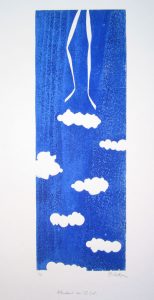 So the concept of waiting surfaced. I began to realise that waiting is a continuing theme in art. Portraits are waiting, not knowing why, but they wait. Not to speak of statues that wait during cold nights in public parks. Even in landscapes, waiting is present: waiting for a thunderstorm, or a sunset. Some wait more than others. Vermeer especially, is a master of waiting. Many of his characters are waiting. They wait, for example in front of a window for what one can only guess at. Or, as in the beautiful painting The Letter: it has finally arrived, been opened and is being read. Waiting has ended which will feed the waiting to come. The letter, which one can read again from beginning to end, or from end to beginning, or only one sentence or just the signature, experiencing the happiness or the distress of the writer. For me, this is a painting which is an Art Lighthouse.
So the concept of waiting surfaced. I began to realise that waiting is a continuing theme in art. Portraits are waiting, not knowing why, but they wait. Not to speak of statues that wait during cold nights in public parks. Even in landscapes, waiting is present: waiting for a thunderstorm, or a sunset. Some wait more than others. Vermeer especially, is a master of waiting. Many of his characters are waiting. They wait, for example in front of a window for what one can only guess at. Or, as in the beautiful painting The Letter: it has finally arrived, been opened and is being read. Waiting has ended which will feed the waiting to come. The letter, which one can read again from beginning to end, or from end to beginning, or only one sentence or just the signature, experiencing the happiness or the distress of the writer. For me, this is a painting which is an Art Lighthouse.
Now, with the theme “ waiting ’’ and the feelings betrayed by one’s legs, I realised that we are all waiting. We spend our lives waiting, and looking around me I see waiting everywhere. Waiting can be found in all circumstances, standing, seated or lying, at home, at work, in the studio, in an airplane, in the subway, in a restaurant, in a bar or any place. And what are we waiting for? We wait for the appearance of the unknown, of an unusual event, the end of a movie, a music piece, a lecture, or the day, the time to go home, to sleep. We wait all the time. Looking closer, we wait too for the end of waiting, of death, our death ending our waiting. So “ Waiting From Day to Day’’ became the theme of the woodcuts, at first isolated and later in the series, one waiting coming after another.
The woodcut “Attendant au guichet” can remind one of an everyday experience. At the bank and waiting my turn, I conceal my waiting, but can one do so? The customer being served waits to be finished. I wait leaning on the counter, legs impatient, one leg used for support, and the other is free to express impatience.
Long after I had printed “Attendant un pied dans la tombe”, I was surprised to find that this print was similar to a print of Narreschiff de Brandt which I saw in the shop of the Disciples of Emmaüs in Scherwiller. I knew this print, but when I cut the Attendant, I did not recall it, at least not consciously.
Now that I am coming close to the end of this set of prints, I feel the need to speak about them, not about each one which gave me a great pleasure to reveal in the wood, but of the set, its origin and birth. I carried this theme inside of myself like a mother carries her child. I see the world through waiting. My view is enriched by what I see, activating all kinds of thoughts to what is called in French “mon vécu”. Walks, which might seem to be aimless, are nothing less than the search for new material for waiting. Once, entering a bookstore, hoping to find something which might point me in a new direction, I discovered the author Ha Jin. It was summer 2002, while I was in the middle of doing the woodcuts “Attendant”. I was in Taipei and my eye caught the title “Waiting”. I read it twice with great appetite, and I found in this book the theme of waiting. I bought others titles by Ha Jin whose biography I discovered with great interest. I waited, postponing further reading to the next day in order to reflect on the pleasure of what I had just read. Here I found the pleasure of waiting, the pleasure of the discovery of waiting. Ha Jin: he is a brother in waiting. Maybe we wait to meet. I like to imagine the moment when he looks at the woodcuts and I listen to his comments. I love to imagine this warm moment where our waiting meets.
Written in French in Taipei April, 2003.
Attendant debout
Attendant et tête de mort
Attendant courant
Attendante au bar
Attendant un pied dans la lumière
Attendant de zéro à l’infini
Attendant de jour en jour
Attendant on the road
Attendant on the road 2
Attendant on the road again
Attendant on the road 3
“L’attente” or the wait seen by others
During my readings I found texts dealing with the waiting and/or the legs:
Haruki Murakami, Danse, danse, danse, Editions du Seuil, 1995, p. 439
Attendre que quelque chose se passe. C’est toujours comme ça. Quand on est coincé, pas la peine d’entreprendre des actions précipitées. Il suffit d’attendre et quelque chose finit par arriver. Il suffit de concentrer son regard et d’attendre pour voir quelque chose commencer à bouger dans ma pénombre. Je savais cela par expérience. Quelque chose allait se mettre en route à un moment donné. Si un événement était nécessaire, il allait forcément se produire.
Bon, alors attendons tranquillement.
Giorgio Armani, interview published by Florence Evin in Le Monde, 01.23.2008 page 26:
« L’important, c’est les jambes, la première chose que les femmes aiment montrer » tell Giorgio Armani.
Alberto Giacometti who wrote in 1958 about the design of the leg:
« Ce qui comptait au moins autant, sinon plus, c’était le désir, le plaisir physique d’avoir devant moi à une hauteur précise un pied d’une dimension précise, le genou à telle hauteur et le haut de la cuisse à ce point précis au-dessus de moi, et ce qui comptait autant c’était l’angle, la direction du pied, de la jambe, de la cuisse avec, d’une certaine manière, le genou comme point fixe. Par contre, la manière dont étaient modelées les différentes parties comptait très peu. »
Letter to Eduard Trier, 13 February 1960, in Alberto Giacometti, this writings M. Leiris et J. Dupin, Paris, Hermann, 1990, p 85. Quoted by Véronique Wiesinger in « Eviter les Socles amorphes ». Giacometti et l’exposition de ses œuvres. In L’Atelier d’Alberto Giacometti, Fondation Alberto et Annette Giacometti / Centre Pompidou, Paris 2007 page 366.
Found in the dentist’s waiting room in the issue of Paris-Match on June 28, 2008, interview with Christian Louboutin :
« Lorsqu’une femme réclame mes services, c’est la plupart du temps pour s’offrir des talons hauts. Les premières choses que je regarde alors, sont sa démarche, la façon dont elle croise ou non ses jambes, souvent cela en dit long sur sa personnalité. »
Biennal 2012 Museum of Fines Arts Taipei page 26
Hannah Hurtzig
“and the pact between the one who waits and the one who keeps someone waiting.”

